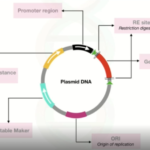Table 1. Specification Values that vary amongst the five COVID-19 Pandemic Planning Scenarios. The situations are meant to advance public health readiness and planning. They are not predictions or price quotes of the anticipated impact of COVID-19. The specification values in each situation will be updated and augmented in time, as we learn more about the epidemiology of COVID-19. Extra specification values might be included the future (e.g., population density, family transmission, and/or race and ethnic background).
| 2.0 4.0 2.5 Infection Fatality Ratio † 0-19 years: 0.00002 20-49 years: 0.00007 50-69 years: 0.0025 70+years: 0.028 0-19 | |||||
|---|---|---|---|---|---|
| years: 0.0001 20-49 years: 0.0003 50-69 years: 0.010 70+years: 0.093 0-19 years: 0.00003 20-49 years: | 0.0002 50-69 years: 0.005 70+years: 0.054 Percent of infections that are | ||||
| asymptomatic § 10%70 %10%70%40%Infectiousness | of asymptomatic people relative to symptomatic ¶ 25%100 %25 %100 %75%Percentage of transmission occurring prior to symptom onset ** 30%70%30%70%50 %* The best quote representative of the point estimates of R 0 from the following sources: Chinazzi M, | Davis JT, Ajelli M, et al. The effect of travel constraints on the spread of the 2019 unique coronavirus(COVID-19) | |||
| break out. Science. 2020; 368 (6489):395 -400; Imai N., | Cori, A., | Dorigatti | , I. | , Baguelin | , M. |
| , Donnelly, C. A., Riley, S., Ferguson, N.M.(2020 ). Report 3: Transmissibility of 2019-nCoV. | Online report Li Q, Guan X, Wu P, et al. Early Transmission Dynamics in Wuhan, China, of Novel Coronavirus-Infected Pneumonia | . N Engl J Med | . 2020; 382 | ||
| (13):1199 -1207 Munayco CV, Tariq A, Rothenberg R, et al. Early transmission characteristics of COVID-19 in a southern hemisphere setting: Lima-Peru: February 29th-March 30th, 2020 [released online ahead of print, 2020 May 12] Contaminate Dis Model. 2020; 5:338 -345 Salje H, Tran Kiem C, Lefrancq N, et al. Estimating the burden of SARS-CoV-2 in | |||||
US, the same group approximated R 0 of in between 4.0 and 7.1 in the pre-print manuscript: Ke R., Sanche S., Romero-Severson, & E., Hengartner, N.(2020). Quick spread of COVID-19 in Europe and the United States suggests the need of early, strong and detailed interventions. medRxiv.
† These quotes are based upon age-specific quotes of infection fatality ratios from Hauser, A., Counotte, M.J., Margossian, C.C., Konstantinoudis, G., Low, N., Althaus, C.L. and Riou, J., 2020. Estimate of SARS-CoV-2 death throughout the early stages of an epidemic: a modeling research study
in Hubei, China, and 6 areas in Europe. PLoS medicine, 17(7), p.e1003189. Hauser et al. produced quotes of IFR for 10-year age bands from 0 to 80+years of age for 6 regions in Europe. Estimates leave out infection fatality ratios from Hubei , China, since weassumed infection and case ascertainment from the 6 European regions are more likely to show ascertainment in the U.S. To obtain the very best price quote values, the point estimates of IFR by age werebalanced to wider age for each of the 6 European regions utilizing weights based upon the age circulation of reported cases from COVID-19 Case Surveillance Public Use Data( https://data.cdc.gov/Case-Surveillance/COVID-19-Case-Surveillance-Public-Use-Data/vbim-akqf ). The estimates for individuals ≥ 70 years old presented here do not include individuals ≥ 80 years old as IFR approximates from Hauser et al., presumed that 100%of infections among individuals ≥ 80 years of ages were reported. The consolidated age estimates were then averaged across the 6 European areas
. The lower bound price quote is the lowest, non-zero point estimate throughout the 6 areas, while the upper bound is the acme quote throughout the 6 areas. § The percent of cases that are asymptomatic, i.e. never ever experience symptoms, stays unsure. Longitudinal testing of individuals is needed to precisely detect the absence of symptoms for the complete period of infectiousness . Existing peer-reviewed and preprint research studies differ widely in follow-up times for re-testing, or do not include re-testing of cases. In addition, studies vary in the definition of a symptomatic case, which makes it difficult to make direct contrasts between price quotes. The percent of cases that are asymptomatic may differ by age, and the age groups reported in studies differ. Provided these restrictions, the range of estimates for Scenarios 1-4 is large. The lower bound estimate approximates the lower 95%self-confidence period bound approximated from: Byambasuren, O., Cardona, M., Bell, K., Clark, J., McLaws, M. L., & Glasziou, P.(2020). Estimating the level of real asymptomatic COVID-19 and its potential for community transmission: methodical evaluation and meta-analysis. Available at SSRN 3586675. The upper bound quote approximates the upper 95 %self-confidence interval bound approximated from: Poletti, P., Tirani, M., Cereda, D., Trentini, F., Guzzetta, G., Sabatino, G., Marziano, V., Castrofino, A., Grosso, F., Del Castillo, G. and Piccarreta, R.( 2020). Likelihood of symptoms and important disease after SARS-CoV-2 infection. arXiv preprint arXiv:2006.08471. The best price quote is the midpoint of this variety
and aligns with price quotes from: Oran DP, Topol EJ. Prevalence of Asymptomatic SARS-CoV-2 Infection: A Narrative Review [released online ahead of print, 2020 Jun 3] Ann Intern Med. 2020; M20-3012. ¶ The current best estimate is based on numerous presumptions. The relative infectiousness of asymptomatic cases to symptomatic cases stays highly uncertain, as asymptomatic cases are tough to recognize, and transmission is difficult to measure and observe. The quotes for relative infectiousness are presumptions based upon studies of viral shedding characteristics. The upper bound of this quote reflects research studies that have shown similar durations and quantities of viral shedding in between asymptomatic and symptomatic cases: Lee, S., Kim, T., Lee, E., Lee, C., Kim, H., Rhee, H., Park, S.Y., Son, H.J., Yu, S., Park, J.W. and Choo, E.J., Clinical Course and Molecular Viral Shedding Among Asymptomatic and Symptomatic Patients With SARS-CoV-2 Infection in a Community Treatment Center in the Republic of Korea. JAMA Internal Medicine; Zou L, Ruan F, Huang M, et al. SARS-CoV-2 Viral Load in Upper Respiratory Specimens of Infected Patients. N Engl J Med. 2020; 382(12):1177 -1179; and Zhou R, Li F, Chen F, et al. Viral characteristics in asymptomatic patients with COVID-19. Int J Infect Dis. 2020; 96:288 -290. The lower bound of this quote shows information showing that viral loads are higher in serious cases relative to mild cases (Liu Y, Yan LM, Wan L, et al. Viral dynamics in severe and moderate cases of COVID-19. Lancet Infect Dis. 2020; 20(6 ):656 -657 )and data showing that viral loads and shedding durations are higher among symptomatic cases relative to asymptomatic cases( Noh JY, Yoon JG, Seong H, et al. Asymptomatic infection and irregular manifestations of
COVID-19: Comparison of viral shedding period [released online ahead of print, 2020 May 21] J Infect. 2020; S0163-4453(20 )30310-8). ** The lower bound of this criterion is estimated from the lower 95%confidence period bound from: He, X., Lau, E.H., Wu, P., Deng, X., Wang, J., Hao, X., Lau, Y.C., Wong, J.Y., Guan, Y., Tan, X. and Mo, X. (2020 ). Temporal characteristics in viral shedding and transmissibility of COVID-19. Nature medication, 26(5 ), pp.672-675. The upper bound of this parameter is approximated from the greater quotes of specific research studies consisted of in: Casey, M., Griffin, J., McAloon, C.G., Byrne, A.W., Madden, J.M., McEvoy, D., Collins, A.B., Hunt, K., Barber, A., Butler, F. and Lane, E.A.(2020). Estimating pre-symptomatic transmission of COVID-19: a secondary analysis using published information. medRxiv.The finest estimate is the geometric mean of the point estimates from these 2 research studies. Table 2. Specification Values Common to the Five COVID-19 Pandemic Planning Scenarios. The criterion values are likely to change as we get extra information about disease seriousness and viral transmissibility of COVID-19. Specification values are based upon information received by CDC through August 8, 2020, including COVID-19 Case Surveillance Public Use Data (https://data.cdc.gov/Case-Surveillance/COVID-19-Case-Surveillance-Public-Use-Data/vbim-akqf ); information from the Hospitalization Surveillance Network (COVID-NET)(through August 1 ); and data from Data Collation and Integration for Public Health Event Response(DCIPHER ). Parameter worths Table 2 Pre-existing immunity Presumption, ASPR and CDC No pre-existing immunity before the pandemic began in 2019. It is assumed that all members of the U.S. population were susceptible to infection prior to the pandemic. Time from exposure to sign onset * ~ 6 days(mean )Time from sign start in a private and sign start of a second person infected by that specific † ~ 6 days (mean )Mean ratio of approximated infections to reported case counts, Overall(range)§ 11(6, 24 )Parameter Values Related to Healthcare Usage Typical variety of days from symptom onset to SARS-CoV-2 test amongst SARS-CoV-2 positive clients(interquartile range )¶ Overall: 3 (1, 6)days Median number of days from symptom beginning to hospitalization(interquartile range) ** 18-49 years: 6( 3, 10)days 50-64 years: 6(2, 10)days ≥ 65 years: 4(1, 9)days Median variety of days of hospitalization amongst those not admitted to ICU(interquartile variety)† † 18-49 years: 3 (2, 5)days 50-64 years: 4(2, 7)days ≥ 65 years: 6(3, 10)days Typical number of days of hospitalization among those confessed to ICU (interquartile range)† †, §
§ 18-49 years: 11(6, 20)days 50-64 years: 14(8, 25 )days ≥ 65 years: 12(6, 20) days Percent confessed to ICU among those hospitalized † † 18-49 years: 23.8% 50-64 years: 36.1%≥ 65 years: 35.3 %Percent on mechanical ventilation amongst those hospitalized.
Consists of both non-ICU and ICU admissions † † 18-49 years: 12.0% 50-64 years: 22.1 %≥ 65 years: 21.1%Percent that pass away among those hospitalized. Consists of both non-ICU and ICU admissions † † 18-49 years: 2.4%50-64 years: 10.0%≥ 65 years: 26.6%Median number of days of mechanical ventilation (interquartile range)** Overall: 6(2, 12)days Mean variety of days from sign beginning to death (interquartile range
| days 50-64 years: 17(10, 26)days ≥ 65 years: 13 (8, | 21 )days Mean variety of days from death to reporting(interquartile variety )¶ ¶ 18-49 years: 19(5, 45 )days 50-64 years: 21(6, 46 )days ≥ 65 years: 19 (5, 44)days Total: 3(1, 6)days 18-49 years: 6( |
|---|---|
| 3, 10 )days 50-64 years: 6(2, 10) days ≥ 65 years: 4( | 1, 9) |
| days 18-49 years: 3 (2, 5) days 50-64 years: 4 (2, 7)days ≥ 65 years: 6(3, 10 )days 18-49 years: 11 (6, 20 )days 50-64years: 14( | 8, 25) |
| days ≥ 65 years: 12(6, 20 )days 18-49 years: 23.8% 50-64 years: 36.1%≥ 65 years: 35.3%18-49 years: 12.0 | %50-64 years: 22.1%≥ |
| 65 years: 21.1%18-49 years: 2.4 %50-64 years: 10.0 | |
| %≥ 65 years: 26.6%Overall: 6(2, 12 )days 18-49 years: 15 (9, 25 )days 50-64 years: 17 (10, 26)days ≥ 65 years : 13 (8, 21 )days 18-49 years | |
| : 19(5, 45)days 50-64 years: 21 (6, 46 )days ≥ 65 years: 19 (5, 44)days * McAloon, C.G., Collins, A., Hunt, K., Barber, A., Byrne, A. | |
| , Butler, F., Casey, M., Griffin, J.M., Lane, E., McEvoy, D. and Wall, P. (2020). The incubation duration of COVID-19: A quick methodical review and meta-analysis of observational research study. medRxiv. † He, X., Lau, E.H., Wu, P., Deng, X. , Wang, J., Hao, | |
| X., Lau, Y.C., Wong, J.Y., Guan, Y., Tan, X. and Mo, X. (2020 ). Temporal characteristics in viral shedding and transmissibility of COVID-19 | . Nature medication, 26( 5), pp.672-675. § The point estimate is the geometric mean of the area specific point price quotes of the ratio |
| of approximated infections to reported cases, from Havers, F.P. | , Reed, C., Lim, T., Montgomery, J.M., Klena, J.D., Hall, A.J., Fry, A.M., Cannon, D.L., Chiang, C.F., Gibbons, A. |
| and Krapiunaya, I., 2020. Seroprevalence of antibodies to SARS-CoV-2 in 10 websites in the United States, March 23-May 12, 2020. JAMA | Internal Medicine. The lower and upper bounds for this parameter quote are the most affordable and greatest |
| point estimates of the ratio of approximated infections to reported cases, respectively, from Havers et al.,2020. | ¶ Estimates only consist of symptom beginning dates in between March 1, 2020– July |
| 15, 2020. Quotes represent time to acquire SARS-CoV-2 tests amongst cases who evaluated favorable for SARS-CoV-2. Quotes based on and data from Data Collation and Integration for Public Health Event Response( | |
| DCIPHER ). ** Estimates just include symptom start dates in between March 1, 2020– July 15, 2020to | guarantee cases have actually had sufficient time to observe the result(healthcare facility discharge or death). Data for 17 years of age and under are suppressed due |
| to little sample sizes. † † Based on information reported to COVID-NET by Aug 1, 2020. Information for 17 years of age and | under are reduced due to little sample sizes. https://gis.cdc.gov/grasp/COVIDNet/COVID19_5.html. § § Cumulative length of stay for persons admitted to the ICU |
, inclusive of
both ICU and non-ICU days
. ¶ ¶ Estimates just include death
dates between March 1, 2020
— July 15, 2020 to ensure
enough time for reporting. Information for 17 year olds and under are suppressed due to small sample
sizes. This material was initially released here.
† These estimates are based on age-specific quotes of infection death ratios from Hauser, A., Counotte, M.J., Margossian, C.C., Konstantinoudis, G., Low, N., Althaus, C.L. and Riou, J., 2020. Hauser et al. produced price quotes of IFR for 10-year age bands from 0 to 80+year old for 6 regions in Europe. The quotes for persons ≥ 70 years old provided here do not consist of persons ≥ 80 years old as IFR estimates from Hauser et al., assumed that 100%of infections among individuals ≥ 80 years old were reported. The lower bound quote is the lowest, non-zero point price quote throughout the 6 areas, while the upper bound is the greatest point price quote across the 6 areas. The upper bound price quote approximates the upper 95 %self-confidence period bound estimated from: Poletti, P., Tirani, M., Cereda, D., Trentini, F., Guzzetta, G., Sabatino, G., Marziano, V., Castrofino, A., Grosso, F., Del Castillo, G. and Piccarreta, R.( 2020).



















